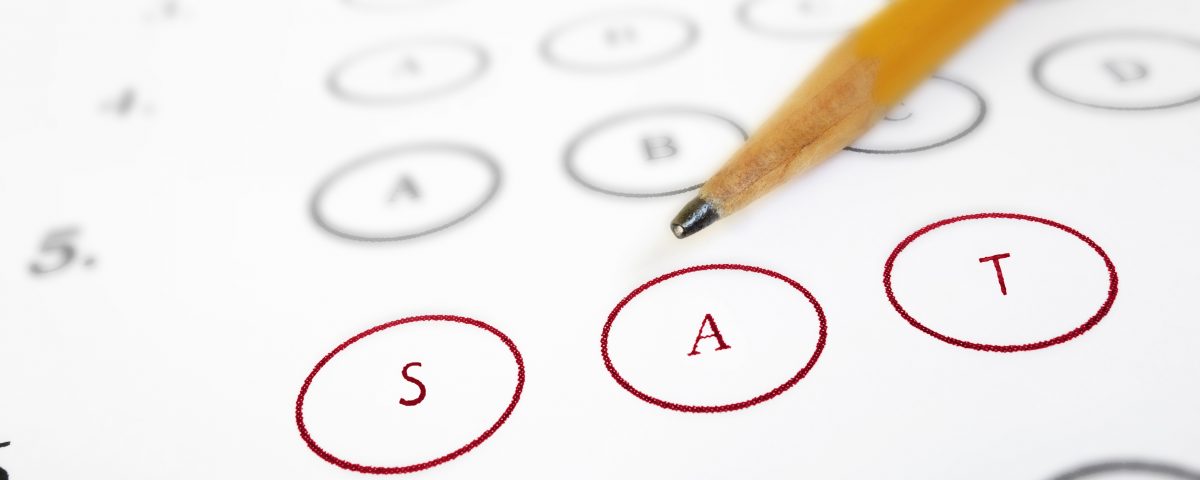Decoding the SAT’s New Format

How to Get a Perfect SAT Score
August 13, 2018
The SSAT and ISEE: Which Test Should My Child Take?
October 8, 2018Each year millions of high school students register and prepare for the SAT exam. Both the SAT and the SAT subject test help college admission officers measure a student’s readiness for college-level work. Being the more common of the two exams, the general SAT typically serves as the de-facto standards for undergraduate college admission. Needless to say, earning a high SAT score can unlock the doorway to college acceptance at some of the nation’s top universities.
As of March 2016, the general SAT underwent a makeover. While the SAT still tests students’ reading, writing, and mathematical abilities, the scoring, allotted time, and the format went through some drastic changes. Your student can rest at ease because understanding the new SAT format can result in heightened scores. Let’s break down the new SAT format.
SAT Overview
Despite undergoing some changes, the SAT tests still has three broad sections that test students’ prowess: Reading/Writing, Mathematics, and an optional Essay. The SAT typically lasts approximately 3 hours and 50 minutes, excluding breaks. Students receive 2 breaks during the SAT: one 10-minute long and another lasting 5 minutes. The sequence of the sections may vary, and a student cannot skip across sections. In other words, a student must complete a section before moving on, and cannot return to the previous section.
The SAT Reading Section
The SAT reading section contains questions related to reading passages and contains approximately 10-11 questions for each passage. The reading section has 5 passages, each varying in length. The section’s primary purpose is to assess the student’s ability to comprehend written text such as a word’s context and implied meanings. Students with an affinity for reading usually perform well in this section, so make sure your student is a seasoned reader. The SAT reading section lasts 65 minutes and contains 52 questions in total.
The SAT Writing Section
Make sure your student has a freshly sharpened pencil on hand because the writing section is back with a new format. The SAT writing section has fewer questions, giving students more time per question. However, don’t think that this session is a walk in the park. The SAT writing section contains 4 passages, with each passage associated with 10-11 questions. This section’s main focal point revolves around the usage and understanding of grammar, so students must identify errors and rephrase sentences with better alternatives.
Aside from content changes, the scoring for this section went through some changes. The SAT Writing section no longer gives students a separate section score, but a score in conjunction with the SAT Reading section. Additionally, the optional essay has its own section independent from the writing section.
The SAT Math Section
Break out a calculator because the SAT Math section makes its return. While this section underwent the least amount of changes, it still looks quite different after its redesign. Students will complete two subsections: one section permitting the use of a calculator and one section without a calculator. The SAT Math section lasts 80 minutes long and has 58 questions, meaning that students have more time on this section and must answer four more questions compared to the old version of the test.
The section permitting the use of a calculator last 55 minutes and contains 38 questions. Meanwhile, the section without a calculator lasts 25 minutes and only has 20 questions. In order to score well on the SAT math section, students should demonstrate knowledge for subject areas such as arithmetic, geometry, algebra, statistics, and probability. This section also contains questions from various mathematical subjects such as:
- Linear equations and inequalities
- Radicals and rational exponents
- Polynomial factors and graphs
- Nonlinear equation graphs
- Functions
- Ratios, rates, and proportions
- Percents
- Units
- Table data
- Data inferences
- Congruence and similarity
- Complex numbers
Furthermore, the new SAT math section tests students on trigonometry whereas the old one didn’t contain trigonometry-related questions.
The (Optional) SAT Essay Section
The final section consists of an optional essay. Students have 50 minutes to analyze a reading passage and craft a masterful essay. After reading a short passage and analyzing the author’s arguments, students must use textual evidence to answer a theoretical prompt. While writing the essay, students should avoid inserting personal viewpoints into the essay. A student’s essay should contain between 650-700 words and have precise language in a logical and consistent manner.
Scoring Changes for the SAT
The biggest change that students should expect to see on the SAT involves the score range. The old SAT had a max score of 2400 while the current version has a max score of 1600. In addition, students are no longer penalized for wrong responses. Thus, it’s best to answer all SAT questions, even if a student must guess on a few of them.
Each section also has unique scores. On both the Reading and Writing sections, students can receive a score between 10-40. However, the two sections combine to get an Evidence-Based Reading and Writing score on a scale of 200-800. Meanwhile, students can receive a score ranging between 200-800 on the math section.
For students choosing to complete the optional essay, two different people will read and score the essay. Each scorer will award the student 1-4 points for each dimension: reading, analysis, and writing. The two scores get added together, yielding three scores (one for each dimension) ranging between 2-8 points. Keep in mind that there are no composite SAT Essay scores or percentiles.
Preparing For The SAT
The SAT exam is not a walk in the park. With so much riding on gaining top SAT scores, all students, regardless of academic levels, can benefit from high-quality SAT test prep programs. Whether your student needs more time reviewing data reasoning questions on the reading section or extra focus on linear equations from the math section, assistance from an SAT tutor can help inspire your student to perform better on test day. Contact an SAT test prep tutor near you today to lead your student to supercharged scores and college acceptance!


